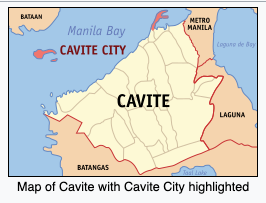I loudly applaud the work of the (presumably automated?) aggregators who roam around English-Wikipedia and pull out, for example, all the significant events of a year like 1614 CE. Those annualized lists are usually my starting point. Then I dive into more specialized lists like Timeline of the Ottoman Empire or Timeline of the Ming Empire. I have my own notes from other sources too, of course (and will have more as the years proceed.) However, today, for 1614 CE, the over-all WP listing produced nothing of any interest to me, except just possibly a reference to the Siege of Osaka, which ran from November 1614 through summer 1615. True, there were also two items about Pocohontas– but I covered all that, yesterday.
Meanwhile, in this whole period since 1492 there has always been a steady drumbeat of events in Spain’s ongoing expansion and maintenance of its still rapidly growing empire. So it is good, periodically, to come back to WP’s portal-page for relevant year in history of the Spanish Empire, which this year is this one. And then, you can dive down into the various “sub-category” rabbit-holes that it leads to.
Today’s dive was, as so often, a pretty rich one. So today I’ll present just one super-quick note about the Siege of Osaka; then take a look at Spain’s imperial expansions in 1614 in the Philippines, “New Spain” (Mexico), and Morocco; and I’ll finish with a short further note on my methods and sources.
Tokugawa shogun wipes out last resistance in Osaka
The Japanese warlord Tokugawa Ieyasu was named shogun in 1603, and inaugurated Japan’s Edo period. But one clan held out, the Toyotomis, and in 1614 they started heavily fortifying their castle in Osaka.
Then, this:
In November of 1614, Tokugawa Ieyasu decided not to let this force grow any larger, and led 164,000 men to Osaka. (The count does not include the troops of Shimazu Tadatsune, an ally of the Toyotomi cause who nevertheless did not send troops to Osaka)… [Several] small forts and villages were attacked before the siege of Osaka Castle itself began on 4 December.
So the castle proved hard to conquer. It had 120,000 men defending it. Tokugawa’s people weren’t able to take it till the following summer, when they created a firestorm inside it. The Toyotomi chief Toyotomi Hideyori and his influential mother Yodo-dono,
committed seppuku [harakiri] in the flames of Osaka castle, ending the Toyotomi legacy. The final major uprising against Tokugawa rule was put to an end, leaving the shogunate unchallenged for approximately 250 years.
The banner image above is a 17th century “God’s-eye” painting of the siege of Osaka Castle.
Spanish empire expands on three continents
In the Philippines, in March 1614, in Captaincy-General of the Philippines created the city of Cavite in Manila Bay, along with a whole province spreading south from it. English-WP notes that,
Owing to its military importance, Cavite had been attacked by foreigners in their quest to conquer Manila and the Philippines. The Dutch made a surprise attack on the city in 1647, pounding the port incessantly, but were repulsed. In 1672, the British occupied the port during their two-year control in the Philippines.
Well, that came later. But here’s what happened from 1614 on: “In the 17th century, encomiendas (Spanish Royal land grants) were given in Cavite and Maragondon to Spanish conquistadores and their families.
In “New Spain” (Mexico), in 1614, in today’s northeast-Mexico state of Nova Leon, an unsettled territory that Juliana de las Casas and her husband had inherited from her father Bernabé de las Casas was founded as the Hacienda de Chipinque. The small village remained almost unpopulated, so the area which comprised it was sold in 1616 to Diego de Villarreal, a Spanish captain and his sons, in order to increase the Spanish population the Salinas Valley region. Today it is still a small town, called El Carmen.

Also in “New Spain”, in the middle of today’s Mexican state of San Luis Potosi, a settler-town called San Nicolás Tolentino was established.
On the Atlantic coast of Morocco, in August 1614, a Spanish fleet under Admiral Luis Fajardo captured Al-Ma’mura (also, Mehdya) from the Saadi Sultan of Morocco, Mulay Zidan.

Then this:
The Spanish retained the city for 67 years, when it was conquered by the Alaouite ruler Moulay Ismaïl. According to tradition, the Bishop of Cadiz had commissioned a statue of Jesus Christ for the church at La Mamora, which was in his diocese.
When the Moroccans reoccupied the town in 1681 they took the statue as loot, and later received a ransom from the Spanish for the return of the statue, which was taken to Madrid where it is nowadays venerated under the name of Cristo de Medinaceli.
A further note on methods
Today was a day of rare calm in the project, since I know that there will be a torrent of developments flooding in very soon. So I took the opportunity to do a little advance planning and organizing. One of the things I did was to look at the pretty helpful WP list of “English overseas possessions”. Then I cut and pasted the relevant parts of that list into an Excel spreadsheet, did two rounds of tagging on each item listed, sorted them all by date, then uploaded the resulting table to a couple of places including here. This way, I can integrate the items there into my daily bulletins fairly easily as we go ahead.
Also: we’re coming up to the first centennial of the project! Woo-hoo!







